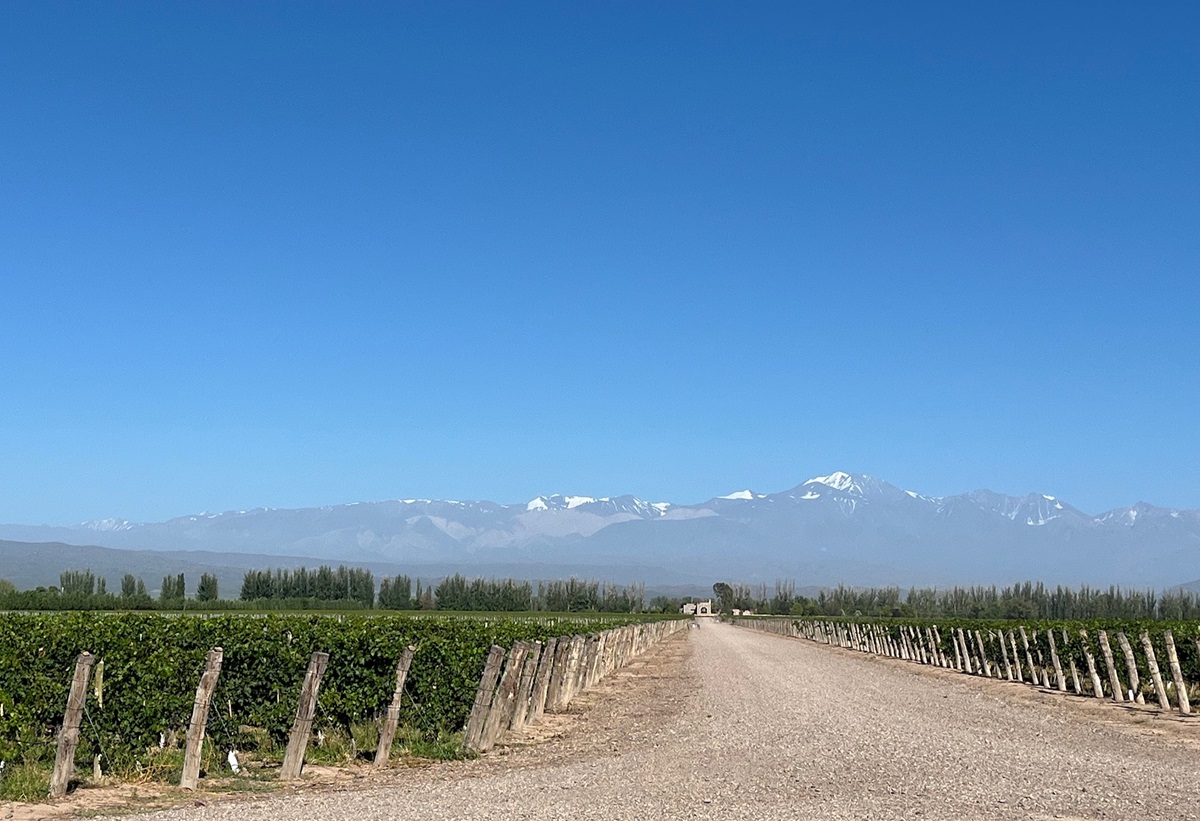JAPAN’S KOSHU GRAPE
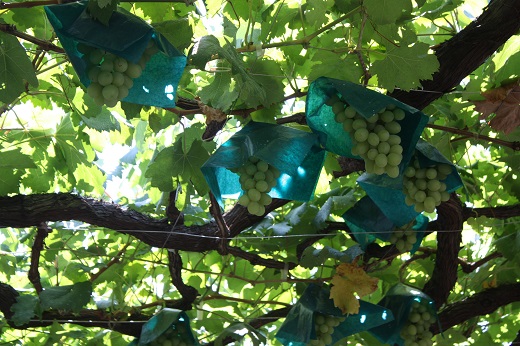
By Rose Murray Brown MW Published in The Scotsman 10 April 2021
Lightness and precision are attributes that are highly prized in Japan. So it is hardly surprising that when it comes to Japanese wine, it offers us a beguiling mix of freshness and delicacy.
This was my over-riding impression when I tuned in to two Japanese wine tastings. The first, hosted by 67 Pall Mall with master sommeliers Ronan Sayburn and Toru Takamatsu, and the second an inspiring seafood sashimi and wine pairing with JFoodo with wine expert Sarah Abbott MW.
At each tasting, they focused on Japan’s most prized grape, delicate pink-hued Koshu. According to Abbott, thick-skinned Koshu is 70% vitis vinifera and 30% vitis labrusca, giving it the ability to thrive in this ‘preposterous’ climate.
“Japan has a long history and heritage of traditional foods, drinks and crafts, with a wine culture that began in 1800s” explains Abbott. “Their artisanal attitude and attention to detail is now focused on dry Koshu, whereas in the past they were made sweeter”.
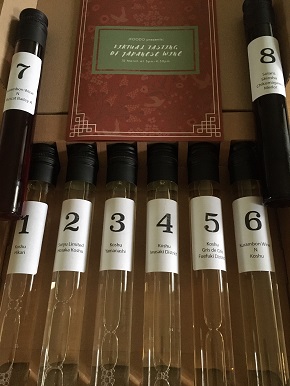 The new dry Koshu style is more suited to western tastes. My last experience of tasting Koshu had been seven years ago. Now artisan producers like Kurambon, Grace Vineyards and Chateau Mercian are fine-tuning still and sparkling Koshu, experimenting with restricted sugar levels, extended skin contact, lees ageing, oak, amphora and Georgian Qvevri ageing, to make a fascinating broad range.
The new dry Koshu style is more suited to western tastes. My last experience of tasting Koshu had been seven years ago. Now artisan producers like Kurambon, Grace Vineyards and Chateau Mercian are fine-tuning still and sparkling Koshu, experimenting with restricted sugar levels, extended skin contact, lees ageing, oak, amphora and Georgian Qvevri ageing, to make a fascinating broad range.
“Koshu is quite adaptable”, says Sayburn. “It has a muted nose with high acid, low sugar and precise palate similar to Spain’s Palomino grape; depending on how it is made it can develop citric, peach, apricot or even sake flavours and reminds me of Pinot Gris, Muscat, Semillon and Assyrtiko”.
With its delicacy it works so well as an appetizer, but also pairs with sashimi. Our accompaniments for Abbott’s tasting from Fine Foods Direct, the Japanese embassy suppliers no less, showed that tuna and salmon sashimi with pickled sushi ginger and delicious Hiyashi Wakame seaweed salad could enhance even the lightest Koshu.
One wine style which worked surprisingly well with our food pairing was an ‘orange’ Koshu. Interestingly my favourite wine at both tastings was this same wine – a beautiful Gris de Gris made with 3 weeks skin contact with a light apricot-skin hue made from a mix of stainless steel and oak. Crafted by Chateau Mercian, a winery which scored my highest marks across both tastings, based in Yamanashi and Nagano.
Historic Yamanashi is home to 80 of Japan’s 300+ wineries. A rural area, just one hour west of Tokyo, now home to the most beautiful wineries in traditional buildings set in a land-locked area surrounded by a cauldron of mountains.
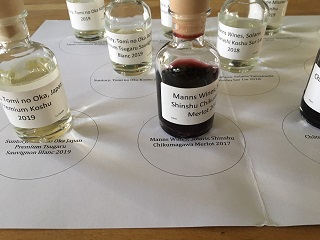 Koshu is planted in fragmented vineyard plots across Yamanashi’s valleys and up on slopes. “It is all about altitude here”, says Abbott. The most prized Koshu plantings are on steep volcanic vineyards at 500m-700m, benefiting from diurnal temperatures.
Koshu is planted in fragmented vineyard plots across Yamanashi’s valleys and up on slopes. “It is all about altitude here”, says Abbott. The most prized Koshu plantings are on steep volcanic vineyards at 500m-700m, benefiting from diurnal temperatures.
Chateau Mercian’s Gris de Gris actually hails from Fuefuki, one of the 13 districts in Yamanashi’s prefecture south of Katsunuma where the microclimate is like a heat trap, with humidity and persistent cloud cover, similar to Australia’s New South Wales.
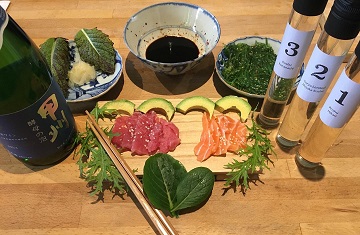 Despite these challenging growing conditions, the Japanese seem ingenious at nurturing Koshu in the humid heat. Some favour pergolas for aeration, others like Grace Vineyards prefer vertical shoot positioning canopies to help them restrict yields and focus on organic viticulture. In typical Japanese meticulous style, some use paper hats to protect individual ripening bunches from excess rain or sun.
Despite these challenging growing conditions, the Japanese seem ingenious at nurturing Koshu in the humid heat. Some favour pergolas for aeration, others like Grace Vineyards prefer vertical shoot positioning canopies to help them restrict yields and focus on organic viticulture. In typical Japanese meticulous style, some use paper hats to protect individual ripening bunches from excess rain or sun.
Artisan growers are also pushing boundaries exploring northerly Nagano – and Hokkaido island. “Nagano is up and coming”, says Abbott. “It is easier to acquire land here in continuous plots and better suited to reds”. Merlot, Syrah and Cabernet Franc – as well as whites Chardonnay and Sauvignon Blanc show promise here.
“Hokkaido island is drier and cooler with a Germanic culture with Zweigelt and Pinot Blanc showing potential”, she says. “Renowned Burgundian Etienne de Montille also has a Pinot Noir joint venture up here”.
Japan’s reds are still a work in progress, but one hybrid red grape is making a name for itself. Muscat Bailey A is now grown all over Japan and pioneering artisan winemaker Takahiko Nozawa at sustainably-run Kurambon winery, who worked in Burgundy for two years, is making one of the best examples in an enchanting Gamay-like style. Watch this space.
DRY WHITE
HISHIYAMA VINEYARD KOSHU PRIVATE RESERVE 2019 Grace Vineyards (11.5%)
£19.69 Strictly Wine; £22 Corking Wines
Grape: Koshu
Intriguing single vineyard wine with floral and saline notes, orange peel, citrus and good fruit depth; a fresh vibrant unoaked example from Koshu grown on granite at 500-600m altitude.
IWASAKU KOSHU 2019 Chateau Mercian (11.5%)
£20 Villeneuve Wines
Grape: Koshu
Overtly fruity well-made Koshu from Iwasaku district, quite Sauvignon Blanc-like with its pungency and fleshy fruits.
IWADE KOSHU KUROKA ‘CUVEE UENO’ 2019 Chateau Mercian (11.5%)
£30 Boutinot Wines
Grape: Koshu
Experimental wine from Iwade district north east of Kofu where soils are sandy well drained. Made in a natural wine style, it has herby smoky reductive notes, rich mouthfeel and bracing saline edge.
 ORANGE
ORANGE
FUEFUKI KOSHU ‘GRIS DE GRIS’ 2019 Chateau Mercian (11.5%) ***STAR BUY***
£17.99-£20 Aitken Wines; Villeneuve Wines; North & South Wines; The Good Wine Shop
Grape: Koshu
Delightful apricot-tinged Koshu with apple and pearskin flavours, light vanilla notes, well structure with a long saline savoury finish. Outstanding winner.
RED
N MUSCAT BAILEY A 2019 Kurambon Wine (12.5%)
£30 www.winesearcher.com
Grape: Muscat Bailey A
Perfumed raspberry fruits, light redcurrant flavours, dried herb notes and bright acidity; like a cross between Gamay and Frappato; a good match with ceviche.
CUVEE MISAWA RIDGE SYSTEM 2012 Grace Vineyards (12.5%)
N/A
Grape: Cabernet Franc
Proof that Japanese Cabernet Franc can both ripen and age well; notes of mellow red fruits, well-balanced palate still holding up extremely well after nine years.
Join Rose’s Looking East wine tastings on 16 & 23 April in association with Corney & Barrow www.rosemurraybrown.com
wine tastings
The perfect gift for the wine enthusiast in the family. Rose does In-person tastings too.
cellar advice
Rose does cellar valuations for private clients, valuations for insurers & bespoke portfolio management.
Related stories
March 31, 2024
By Rose Murray Brown MW Published in The Scotsman 30 March 2024 On 2 February 1659, the first wine made from grapes grown in South Africa was crafted by the Governor of the Cape, Jan van Riebeeck. He had planted vines four years earlier in the Company’s Garden near Cape Town from cuttings imported from France. Van Riebeeck’s first
March 24, 2024
By Rose Murray Brown MW Published in The Scotsman 16 March 2024 Heatwaves and bushfires were very much on the agenda when I visited Chile last month as winemakers prepared for their 2024 harvest in blistering heat and drought, with a plume of smoke from the devastating fires lingering over coastal hills. Heat and drought are the greatest challenges
March 23, 2024
By Rose Murray Brown MW Published in The Scotsman 9 March 2024 I have two glasses of Malbec in my hands from the same high-altitude vineyard in Uco valley in Argentina. I am in the Catena Institute of Wine in Mendoza with winemaker Agustin Silva. He has asked me to taste the two wines, both from the 1500m high



